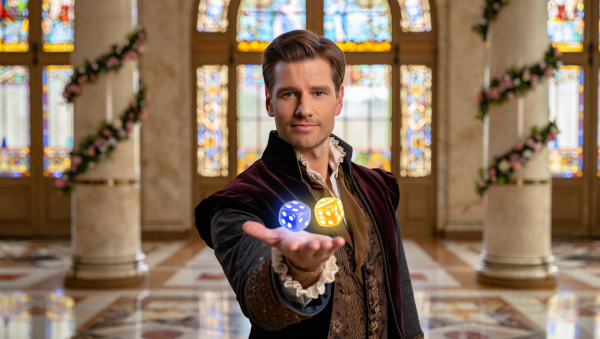
Jun 19, 2025
Just because a coin landed heads five times doesn’t mean tails is “due.” That’s elementary probability—but when money’s on the line, even smart traders forget basic math. They start believing that after three losing trades, a winner is inevitable. After a hot streak, they brace for the crash. Stop treating markets like roulette wheels! The gambler’s fallacy isn’t just a casino problem—it’s a day trading epidemic that’s silently bleeding accounts dry across every exchange from Wall Street to crypto.
The gambler’s fallacy is the mistaken belief that past results affect future probabilities in independent events. In trading terms, it’s the toxic assumption that patterns will “even out”—that losses must be followed by wins, or that hot streaks inevitably end in disaster. It’s statistical illiteracy disguised as market wisdom, and it’s costing traders millions daily.
The Independence Delusion: When Traders Forget Basic Math
Here’s how the gambler’s fallacy manifests in day trading: You’ve just closed four consecutive losing positions. Your brain screams that the fifth trade is statistically “due” to win. So you double your position size, convinced that probability is on your side. The result? You turn four small losses into one catastrophic blow-up.
Or consider the inverse: After five winning trades, you start getting nervous. “This streak can’t last,” you think. So you reduce your position size on what would have been your biggest winner, or worse—you sit out entirely, watching profits you should have captured slip away.
The brutal truth? Each trade is an independent event. Your previous losses don’t make the next trade more likely to succeed. Your winning streak doesn’t doom the next position to failure. Markets don’t have memory—but traders do, and that memory is their enemy.
Crypto Casino: Where Gambler’s Fallacy Goes Nuclear
Want to see the gambler’s fallacy in its purest, most destructive form? Look at crypto day trading during the 2021-2022 cycle. Bitcoin would flash crash 10% in minutes, and traders would pile in thinking, “It can’t keep falling—it’s due for a bounce!” They’d catch falling knives all the way down, each failed attempt reinforcing their belief that the reversal was “overdue.”
The opposite happened during parabolic moves. After Bitcoin surged from $30K to $60K, traders started shorting every rally, convinced that “what goes up must come down.” They got steamrolled repeatedly, but kept doubling down because they were certain the correction was “statistically inevitable.”
Professional crypto traders? They weren’t thinking about what was “due.” They were following price action, managing risk, and treating each setup as an independent probability. While retail traders were playing probability roulette, pros were systematically harvesting their mistakes.
The Meme Stock Massacre: When Pattern Recognition Goes Wrong
The GameStop saga of 2021 provides a masterclass in how the gambler’s fallacy destroys wealth. After the initial squeeze from $20 to $480, the stock crashed below $100. Thousands of day traders, convinced that lightning would strike twice, started buying every dip. “It squeezed before—it has to squeeze again!” they reasoned.
But here’s the kicker: each attempt to recreate the original squeeze was an independent event with completely different market conditions. The first squeeze was a perfect storm of high short interest, low float, and coordinated buying pressure. The subsequent attempts? Just desperate traders chasing ghosts, convinced that past performance predicted future results.
The pattern repeated with AMC, Bed Bath & Beyond, and countless other “meme stocks.” Traders kept expecting history to rhyme, not realizing they were fighting the last war with outdated weapons.
The Behavioral Finance Web: Why Smart People Make Dumb Bets
The gambler’s fallacy doesn’t operate in isolation—it’s part of a toxic behavioral cocktail that poisons trading decisions. Here’s how it interconnects with other cognitive biases:
Hot-Hand Fallacy: The gambler’s fallacy’s evil twin. While one makes you expect reversals, the other makes you expect streaks to continue. Traders oscillate between both, creating whipsaw losses.
Confirmation Bias: After convincing yourself that a reversal is “due,” you’ll cherry-pick evidence supporting your thesis while ignoring contradictory signals. Your analysis becomes a self-serving narrative instead of objective assessment.
Loss Aversion: The pain of losses is twice as intense as the joy of equivalent gains. This amplifies the gambler’s fallacy—after losses, the desperate need for a win makes the “law of averages” feel emotionally compelling.
Overconfidence Bias: Early success makes traders believe they’ve discovered patterns in randomness. They start seeing “due” reversals everywhere, convinced their pattern recognition skills give them an edge.
The Algorithmic Advantage: Why Machines Don’t Fall for Fallacies
Here’s what’s fascinating: algorithmic trading systems don’t suffer from the gambler’s fallacy. They don’t “remember” past trades or expect patterns to balance out. Each decision is based on current market conditions, statistical probabilities, and predefined risk parameters.
This gives algo traders a massive edge over emotional humans. While retail day traders are betting on what’s “due,” algorithms are systematically exploiting their cognitive errors. The machines aren’t smarter—they’re just free from the psychological baggage that sabotages human decision-making.
The Contrarian Cure: Trading Like a Probabilistic Monk
So how does the gambler’s fallacy manifest in day trading? It transforms statistical illiteracy into financial suicide, turning independent probability into imaginary patterns. But here’s your contrarian playbook to break free:
Treat Every Trade as Trade #1: Mentally reset before each position. Your previous wins and losses are sunk costs—they have zero bearing on your next trade’s probability of success. Think like an amnesiac with perfect risk management.
Position Size Based on Probability, Not History: Don’t increase your bet size because you’re “due” for a winner. Don’t decrease it because you’re on a hot streak. Size positions based on the current setup’s risk-reward ratio and your systematic criteria.
Document Your Edge: Keep detailed records showing your win rate, average winners, and average losers across different setups. Real data will cure you of pattern-seeking behavior faster than any lecture on probability theory.
Embrace Randomness: Accept that profitable trading involves controlled exposure to uncertainty, not pattern prediction. Your edge comes from consistent execution of high-probability setups—not from predicting when the “law of averages” will kick in.
Build Independence Checks: Before every trade, ask: “Would I take this position if I had no trading history?” If the answer is no, you’re probably falling victim to the gambler’s fallacy.
The Million-Dollar Question: Why Most Traders Never Learn
Here’s the uncomfortable truth: most day traders never overcome the gambler’s fallacy because it feels so intuitively correct. The human brain is pattern-seeking machinery, constantly trying to find order in chaos. When markets move randomly, our brains rebel against the randomness and invent patterns that don’t exist.
Professional traders understand something that destroys most amateurs: markets are simultaneously patterned and random. There are tradeable edges in price action, momentum, and volatility—but these edges don’t follow the neat “balancing” that the gambler’s fallacy expects.
The traders who build lasting wealth aren’t the ones predicting when patterns will “even out.” They’re the ones systematically exploiting the cognitive errors of traders who think they can predict when randomness will become orderly.
Stop looking for balance in chaos. Start finding edges in probability. Your account balance will thank you when you’re profiting from statistics instead of falling victim to fallacies.
Breaking Barriers and Redefining Intelligence










